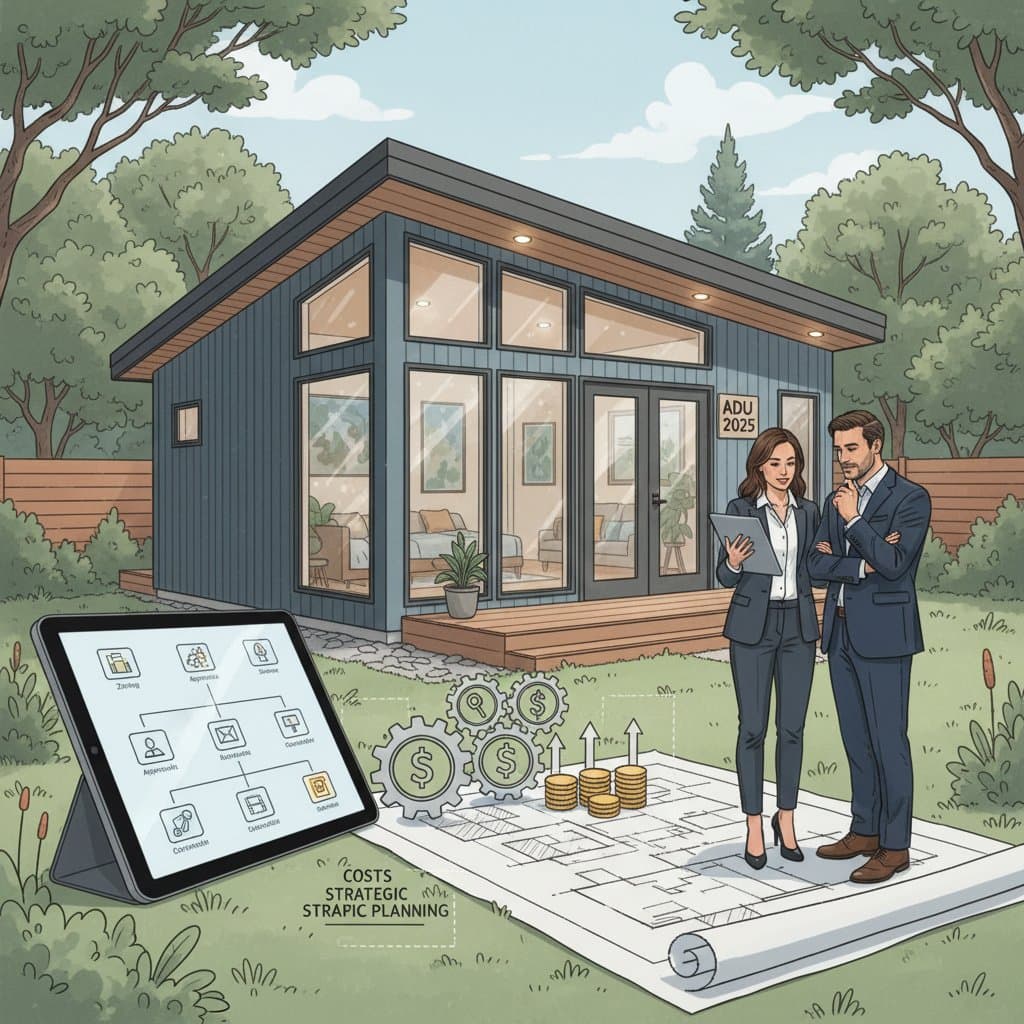Reclaim Home Water: Greywater Installation Essentials for 2025
Summary Box
National average cost: $3,800
Typical range: $2,000 to $6,000
Low end and high end: $1,200 for basic laundry-to-landscape systems; $10,000 for whole-house reuse integrated with irrigation
Time to complete: 2 to 5 days on site
DIY or Pro: Small-scale systems suit DIY efforts; whole-house installations require a licensed plumber
ROI or resale impact: 2 to 5 percent increase in property value in drought-prone regions
Updated: April 2025
Cost Breakdown
| Item | Unit cost | Typical quantity | Line total | Notes |
|---|---|---|---|---|
| Diverter valve | $40 to $120 each | 1 | $40 to $120 | Directs greywater from drain to reuse pipeline |
| Filtration unit | $150 to $600 | 1 | $150 to $600 | Eliminates lint, hair, and soap residues |
| Storage tank | $300 to $900 | 1 | $300 to $900 | Accommodates 50 to 200 gallons |
| Pump and controls | $250 to $800 | 1 | $250 to $800 | Essential for sites lacking sufficient gravity flow |
| Distribution piping | $1.50 to $3 per foot | 50 to 200 feet | $75 to $600 | Constructed from PVC or polyethylene |
| Labor | $75 to $125 per hour | 12 to 30 hours | $900 to $3,750 | Provided by licensed plumber and assistant |
| Permits and inspection | $100 to $300 | 1 | $100 to $300 | Mandatory in numerous municipalities |
| Disposal of debris | $50 to $150 | 1 | $50 to $150 | Covers patching of drywall or concrete surfaces |
Typical total cost: $3,000 to $6,000
Cost Factors
Scope and system size determine expenses significantly. Laundry-only configurations incur lower costs compared to setups connecting full bathrooms and laundry areas.
Material quality affects both longevity and price. Opting for high-density polyethylene piping alongside stainless steel valves enhances durability at a premium.
Site-specific challenges elevate labor demands. Homes with basements or concrete slabs often require additional excavation or cutting.
Water pressure and terrain influence equipment needs. Properties on level ground typically necessitate pumps to facilitate distribution.
Regional labor rates vary widely. Plumbers in urban settings charge rates that can exceed those in rural areas by double.
Custom integrations, such as linking to irrigation controllers or incorporating smart sensors, increase upfront costs while optimizing performance over time.
DIY vs Professional Installation
DIY-friendly tasks:
- Map out greywater pathways from laundry or shower drains.
- Position surface-level irrigation hoses.
- Secure filter housings and storage tanks in place.
Tasks requiring a licensed professional:
- Modify and redirect existing drain lines.
- Wire pumps or control panels to electrical sources.
- Verify backflow prevention devices and ensure adherence to plumbing codes through testing.
Safety and code considerations:
Greywater systems must avoid any contact with potable water supplies. Label all pipelines clearly and maintain separation from drinking water lines. Direct discharge below ground surface to minimize odors and prevent mosquito breeding. Consult local plumbing regulations prior to any drain modifications.
Strategies to Minimize Costs Effectively
Begin with a modest setup. Laundry-to-landscape kits, priced below $1,500 when installed, recover investment rapidly by curtailing outdoor irrigation demands.
Leverage natural elevation. Design systems that rely on gravity if the yard descends from the house, thereby avoiding pump expenses.
Select manual diverter options. These provide basic functionality at lower cost, though automatic versions offer ease of use with added upkeep requirements.
Coordinate with ongoing renovations. Align greywater projects with bathroom updates to access walls and drains without extra disruption.
Solicit multiple bids. Request detailed breakdowns from plumbers covering labor hours, filter specifications, and piping measurements.
Quote Evaluation Checklist
- Itemization of scope by connected fixtures
- Specification of material grades
- Inclusion of surface repairs and site cleanup
- Disclosure of permit and inspection charges
- Outline of warranty coverage and maintenance protocols
- Definition of payment terms tied to project phases
Step-by-Step Installation Guide
Required Tools
- Pipe cutter and adjustable wrench
- Teflon tape for threading
- PVC primer and cement
- Drill equipped with hole saw
- Safety glasses and work gloves
Installation Steps
- Plan pathways. Locate suitable drains from laundry or showers that generate greywater.
- Fit the diverter valve. Position it near the source drain for straightforward operation and access.
- Attach the filter unit. Install at a convenient height to simplify routine cleaning.
- Lay distribution pipes. Extend lines to storage tank or irrigation areas, maintaining a minimum slope of 1 inch per 8 feet to promote flow.
- Secure connections. Apply PVC cement to joints and inspect for airtight seals.
- Conduct flow tests. Operate a washing cycle or fill a tub to verify greywater reaches the intended destination without leaks.
- Finalize and inspect. If applicable, integrate pumps or controls, then schedule a professional review to confirm code compliance and system integrity.
Ongoing Maintenance and System Durability
Perform filter cleaning on a monthly basis to sustain water quality. Flush pipelines seasonally to clear accumulated soaps and debris. Expect to replace valves and seals approximately every five years, depending on usage intensity. Regularly check for signs of leaks, unusual odors, or clogs to address issues promptly and extend the system's lifespan beyond a decade.
Data Sources and Approach
This analysis draws from current national project records, consultations with plumbing experts, and pricing from leading suppliers for standard residential greywater applications. Actual figures fluctuate based on geographic location, project intricacies, and prevailing regulations.



